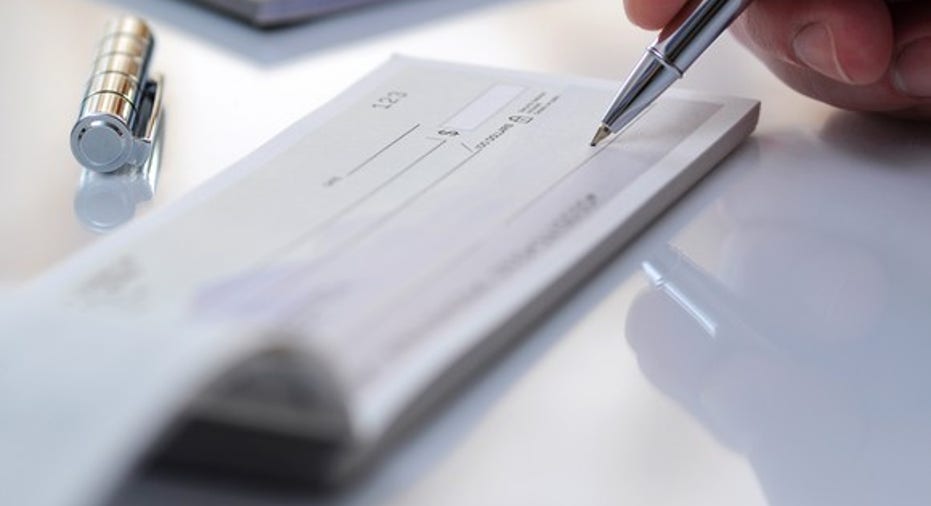How to Close a Checking Account When a Loved One Dies

Image source: Getty Images.
Dealing with deathand handling legal affairs for someone who has passed away can be complicated. The situation can be even more complicated if the deceased person didn't make the proper legal provisions for his finances. Learn how to close a checking accountfor a deceased person so that you can efficiently handle the task and minimize issues during an already difficult time.
How to close a checking account of a deceased person
The steps necessary for closing the savings, loan orchecking accountof someone who haspassed awaydepends on a few factors, including:
- Whether the deceased has awillwith anexecutor
- Ifthereis a joint account holder
- If you are simply anext of kin
The steps you need to take to close the checking account of a deceased person vary depending on your relationship with the account. Here are the different actions you'll need to take depending on your status.
If you are a joint account holder
In most states and circumstances, if you are the joint account holder, you are also legal owner of the account. You do not need to provide any proof or documentation to the bank, and you can close the account if you want.
If you are the beneficiary
If the bank account is a custodial account that names you as the pay-on-death beneficiary, you must request a certified copy of the death certificate from the state's office of vital records and present it to the bank with identification. The bank should then release the money to you and allow you to close the account.
If you are named power of attorney
If you were named power of attorney for the account during the deceased person's life, you were allowed to use the account to pay their bills. After the personpasses away,you are no longer entitled to have access to the person's checking accountand you cannot close it -- unless you are also named as a joint account holder, trustee or named by a probate judge as executor of the will for theestate.
If you are a trustee
If the deceased created a trust and names you as trustee to the account after his death, you must provide the bank with the following in order to close the account:
- Thedeath certificate
- Identification
- Trustee provision naming you trustee
If the deceased named a beneficiary other than the trustee, the trustee must give the money from the account to the beneficiary.
How to close a checking account without a will
Your steps for closing a checking account of a deceased person are a little different for the following situation:
- If the deceased was the only person on the checking account
- No willexists
- You are next of kin
If these three elements are true in your situation, you must follow these steps to close the single-signature checking account:
- Request a copy of the death certificate from the state's office of vital records. Depending on the state, you can do this online, in person or by mail. The state will likely charge a fee for the death certificate.
- Notify the probate court that there is no will.
- Receive a letter of testamentary.The judge will grant this document, whichnames you asthe executor of the estate. The letter gives you the legal right to close the checking account for the estate. As executor of the estate, you must give the money to whomever state law says is the rightful owner.
How to close a checking account with a will
If the deceased person had a will that names you as theexecutor, you can close the person's checking account by taking the following steps:
- Obtain a copy of the death certificate from the state's office of vital statistics.Depending on the state, you can do this online, in person or by mail.The state will likely charge a fee for the death certificate.
- File the will with the probate court.
- The judge will provide you with a letter of testamentary officially naming you executor.
- As executor, you must provide the bank with your letter of testamentary.
- You will likely need to provide other related documentation, such as bank statements, and fill out forms required by the bank. Bank of America, for example, requires a copy of the death certificate, the deceased's Social Security number, bank account number and any other documentation you have.
Once you've completed these steps, the bank will then issue a case number and contact you to finalize the closure of the checking account.
This article originally appeared at GoBankingRates.
The article How to Close a Checking Account When a Loved One Dies originally appeared on Fool.com.
GoBankingRates has no position in any stocks mentioned. The Motley Fool recommends Bank of America. Try any of our Foolish newsletter services free for 30 days. We Fools may not all hold the same opinions, but we all believe that considering a diverse range of insights makes us better investors. The Motley Fool has a disclosure policy.
Copyright 1995 - 2016 The Motley Fool, LLC. All rights reserved. The Motley Fool has a disclosure policy.